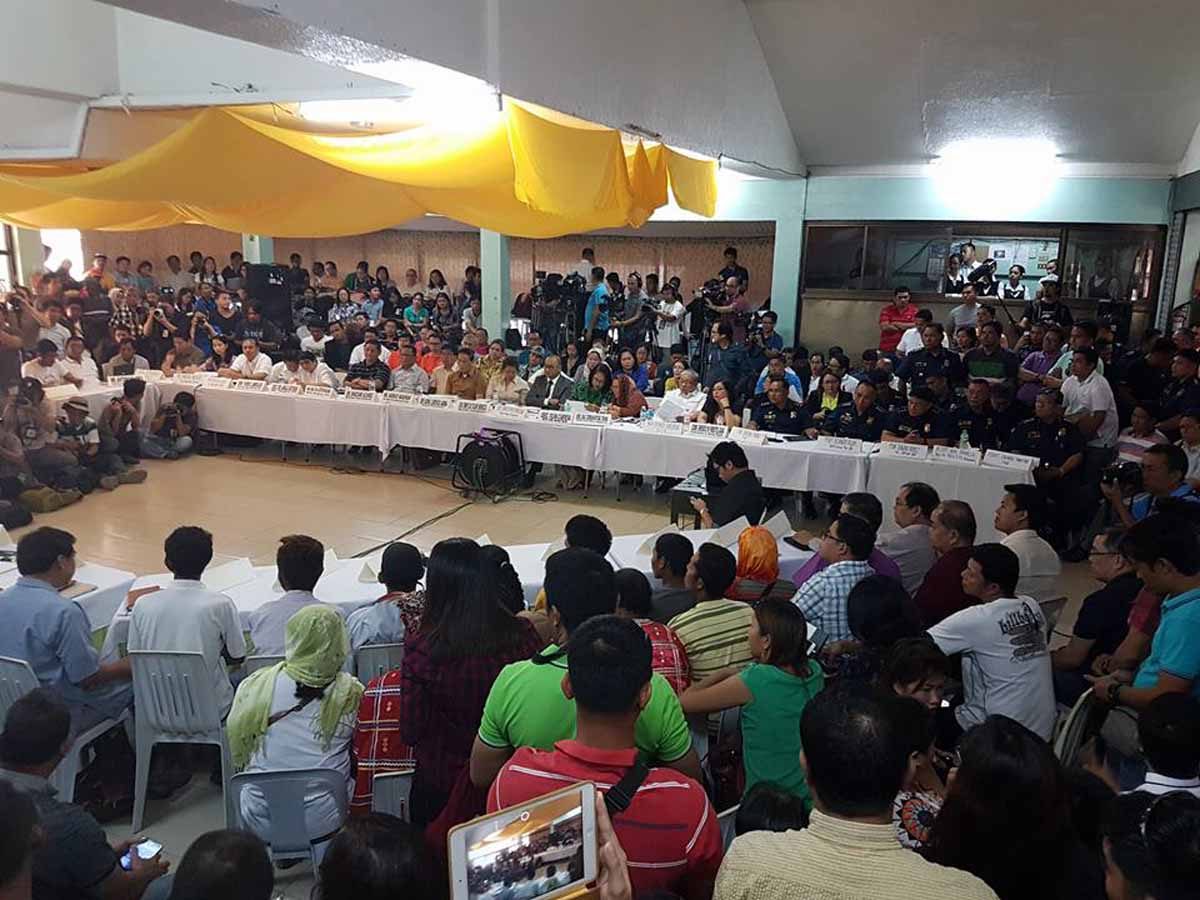SUMMARY
This is AI generated summarization, which may have errors. For context, always refer to the full article.

MANILA, Philippines – The Department of Agriculture (DA) Region 12 office said on Thursday, April 7, that it did all it could to address the concerns of farmers in the region hit by El Niño.
In an interview with Rappler, DA-Soccsksargen executive director Amalia Jayag Datukan reiterated that the office had coordinated with concerned local government units and municipal agriculturists tasked to gather information on the ground, and relay instructions and guidance from the office to the farmers to prepare them for the effects of El Niño.
Her position echoed that of Agriculture Undersecretary Emerson Palad, who defended the department against criticism in the wake of the Kidapawan protest that killed two protesters and injured over a hundred others.
Throughout these preparations, and even as El Niño struck the region, Datukan said the DA officials were working with the LGUs and municipal agriculturists.
She claimed that during this time, the regional office did not receive any complaints or reports concerning the farmers that required additional DA measures.
“Wala po doon sa mga meetings na nagsasabi (During our consultations with municipal agriculturists, no one mentioned anything),” Datukan said.
Nor was there word from partner radio broadcasters in the area who were supposed to relay to the regional office any concerns that reach them.
“Kung meron man po (silang binanggit), napuntahan sana ng DA (Had they given us information, the DA could have visited the area),” Datukan explained.
Farmers, joined by militant groups, held the Kidapawan protest to amplify their sufferings brought about by El Niño. Many of them marched, hoping they would receive emergency provisions from the government. (WATCH: Gaano kahirap maging magsasaka sa Pilipinas?)
The violence which erupted that day raised the question of whether or not the Philippine government sufficiently tackled the drought and food crisis, especially in a place as vulnerable as Mindanao.
Projects and programs
Datukan also highlighted projects implemented prior to El Niño and the DA’s response during the weather phenomenon. (READ: Kidapawan and why the Philippines is always short of rice)
She said that as early as July 2015, the DA already began to “act” in preparation for El Niño. She said DA-Soccsksargen provided the following:
- Information dissemination
- Distribution of materials
- Patubig or water provision
Under the information campaign, the DA encouraged farmers to conserve water and plant alternative crops like vegetables and legumes. The patubig included cloud seeding and small-scale irrigation projects using alternative water sources.
DA-Soccsksargen was also on the lookout for pests, which the national office had warned against. Because of the heat, pests and diseases targeting crops would become more prevalent during El Niño, according to the DA head office.
The projects Datukan discussed were part of the national program to respond to El Niño, detailed in the DA’s website.
DA-Soccsksargen also worked with the North Cotabato provincial government, which Datukan also pointed out. “Governor Lala (Mendoza) po ang tumawag sa amin as early as March at nakipag-coordinate sa amin (Governor Lala called us as early as March and coordinated with us),” she said.
The provincial government also had its own projects in response to the drought.
At the Senate hearing on the Kidapawan incident on Thursday, North Cotabato Governor Emmylou Taliño-Mendoza said she allocated P3.5 million from the Quick Response Fund (QRF) for cloud seeding and 1,500 sacks of rice.
Aside from rice, the provincial government also stocked up on food and non-food provisions in preparation for El Niño.
The QRF is 30% of the calamity fund, or 5% of the local government’s estimated revenue from regular sources. (READ: Where can you access disaster funds?)
For 2016, Mendoza pegged the province’s calamity fund at around P100 million, so her QRF was roughly P30 million while the rest was for pre-disaster measures, which she called “preparedness.”
Delayed response?
During the probe, however, Senator Alan Peter Cayetano questioned whether the right response came at the right time.
He questioned whether it was appropriate to release funds for efforts focused on watering the fields when they were already too dry. He asked whether it would have been better to use it for food provision instead.
“Kapag inilabas mo ang pera sa January, February, March para sa El Niño, wala ka nang magagawa. Masyado na matigas ang lupa. Ilalabas mo ang pera 2015, para ‘yung patubig nila at ‘yung iba na mga equipment at seeds magkaroon ng tsansa,” said Cayetano.
(When you release the money for El Niño in January, February, March, there’s nothing you can do anymore. The land is already too hard. You should have released the money in 2015 so the watering projects and other equipment and seeds will have a chance.)
Whether or not the government has done the right thing, the damage has already been done.
Cayetano said that on a national scale, El Niño damage totaled P4.7 billion, affecting 121,490 farmers in North Cotabato alone. Worst of all, lives have been lost and more farmers continue to suffer. – Rappler.com
Add a comment
How does this make you feel?
There are no comments yet. Add your comment to start the conversation.